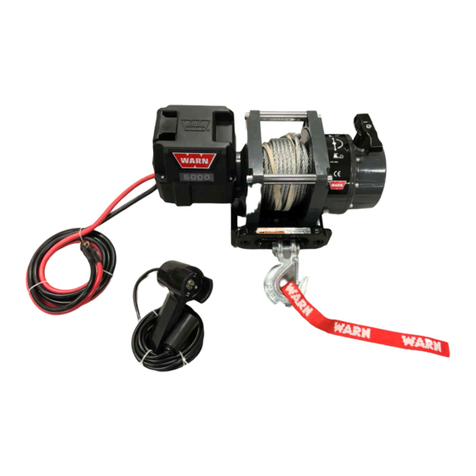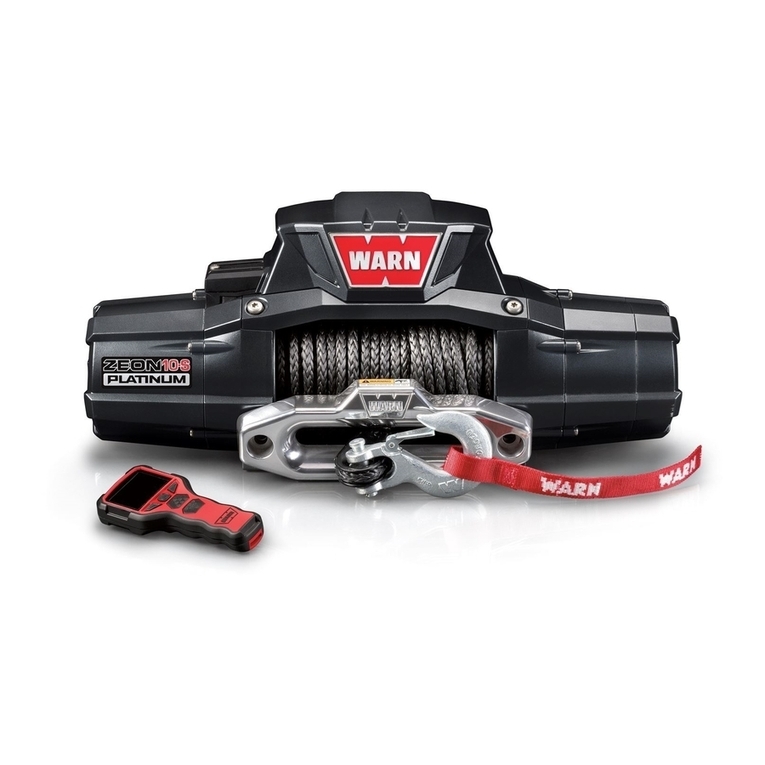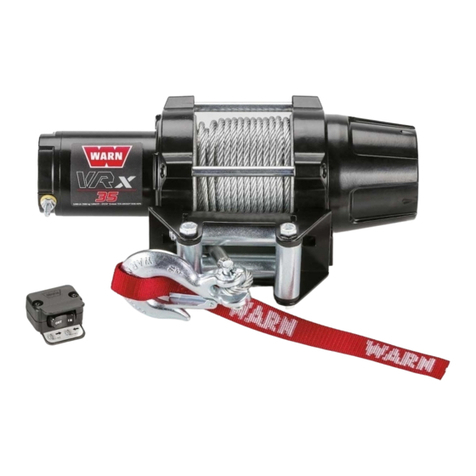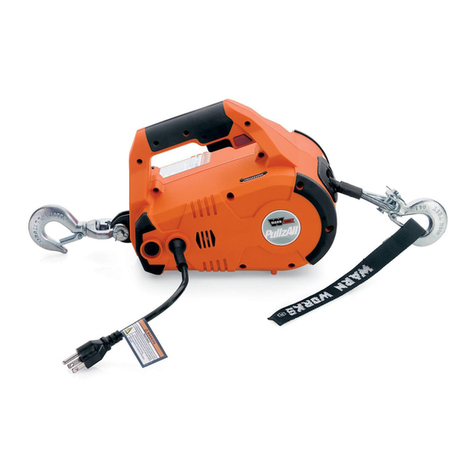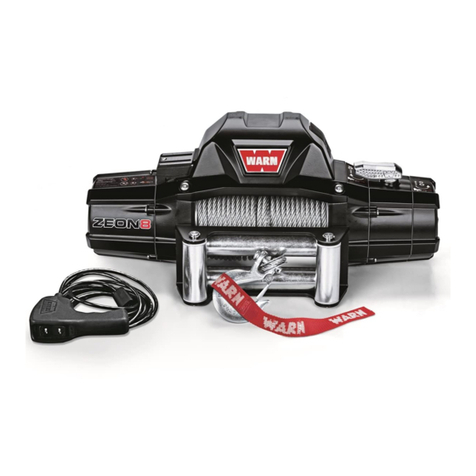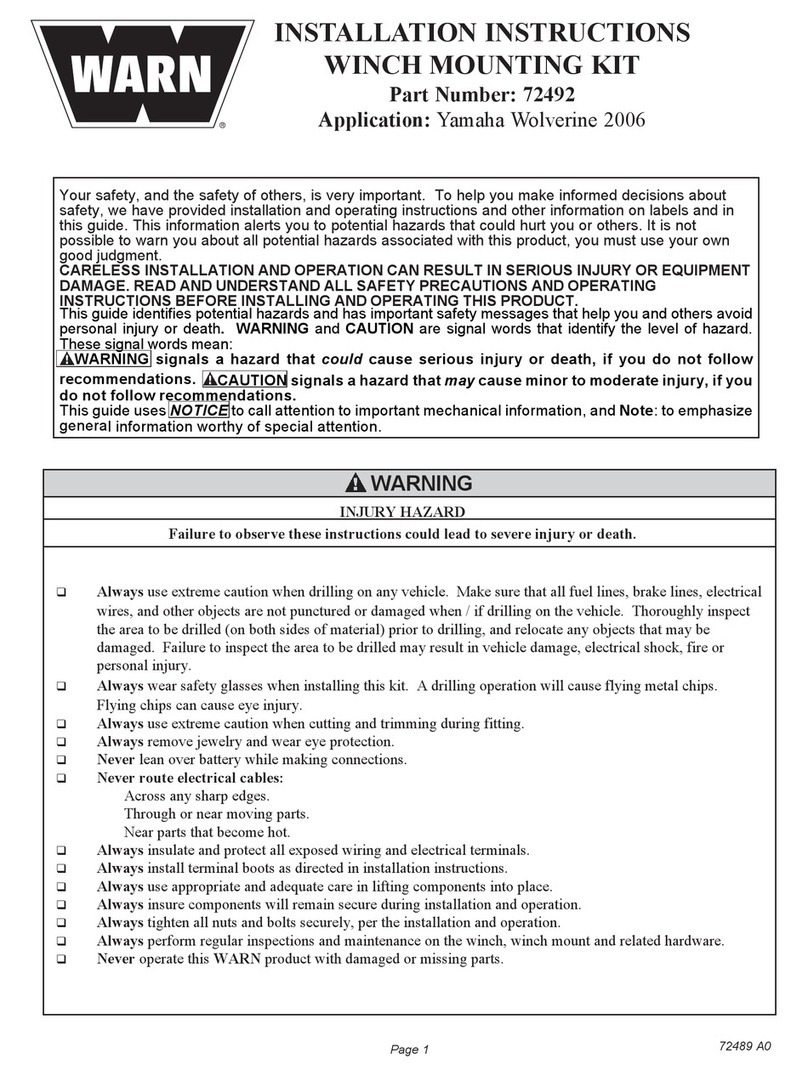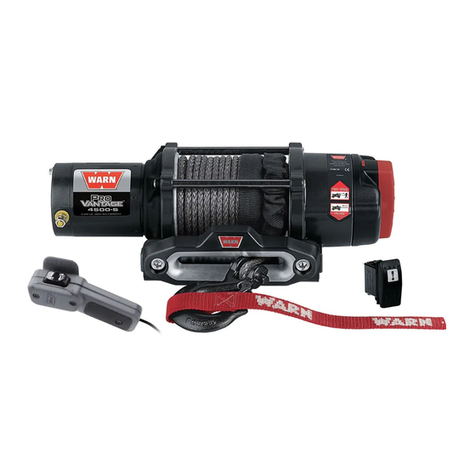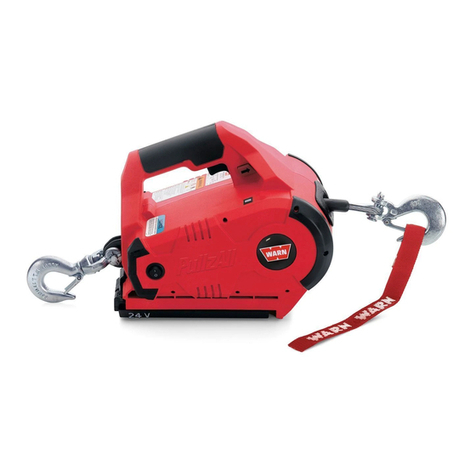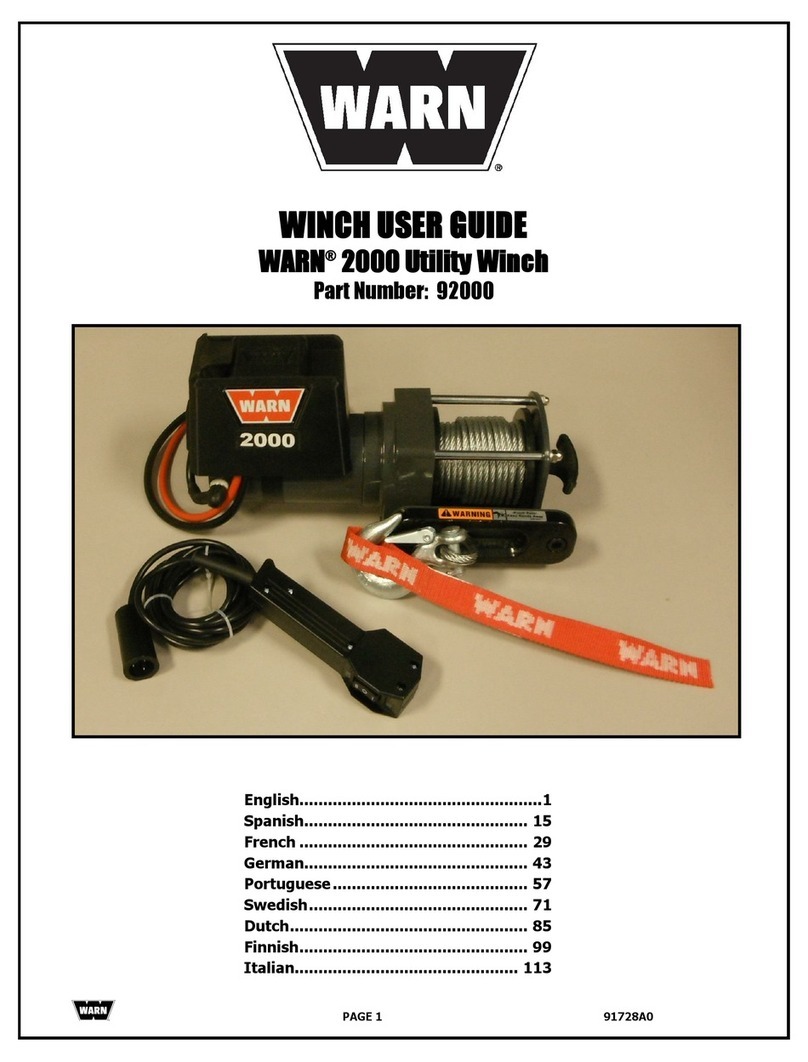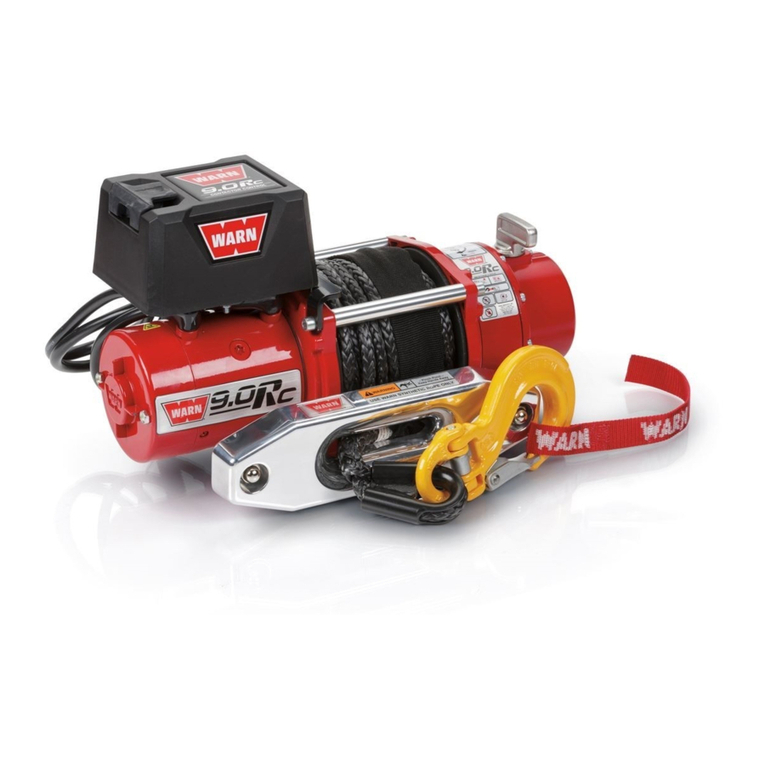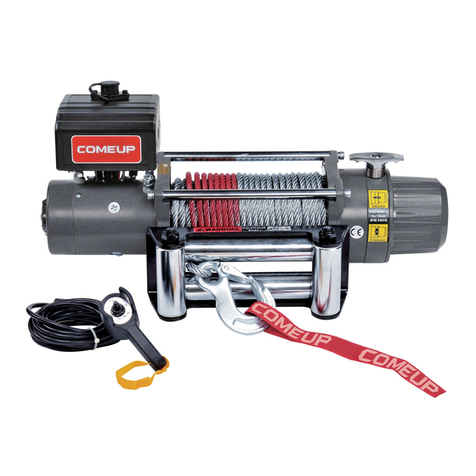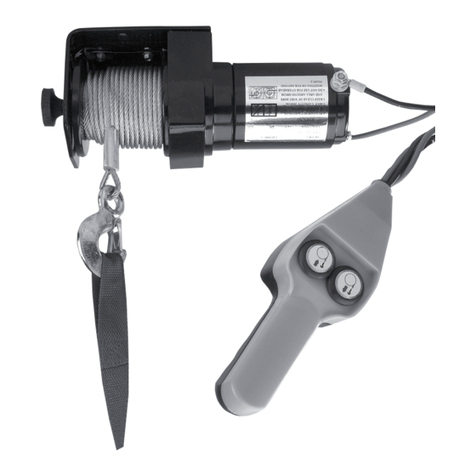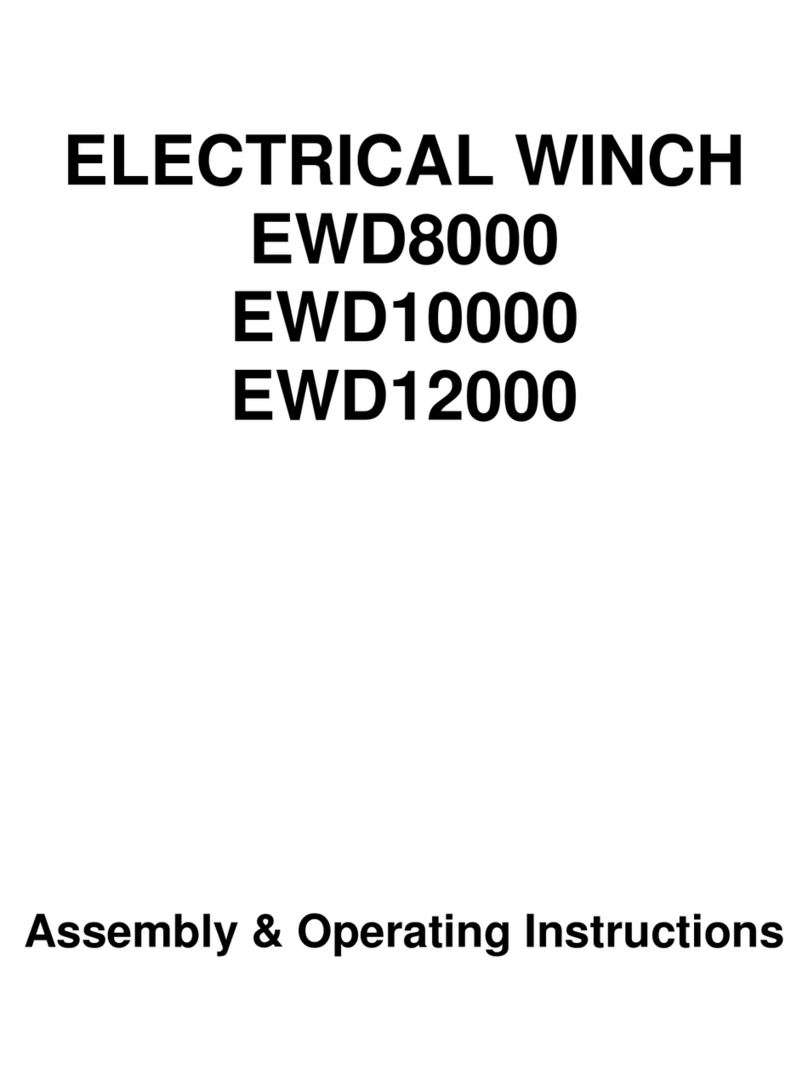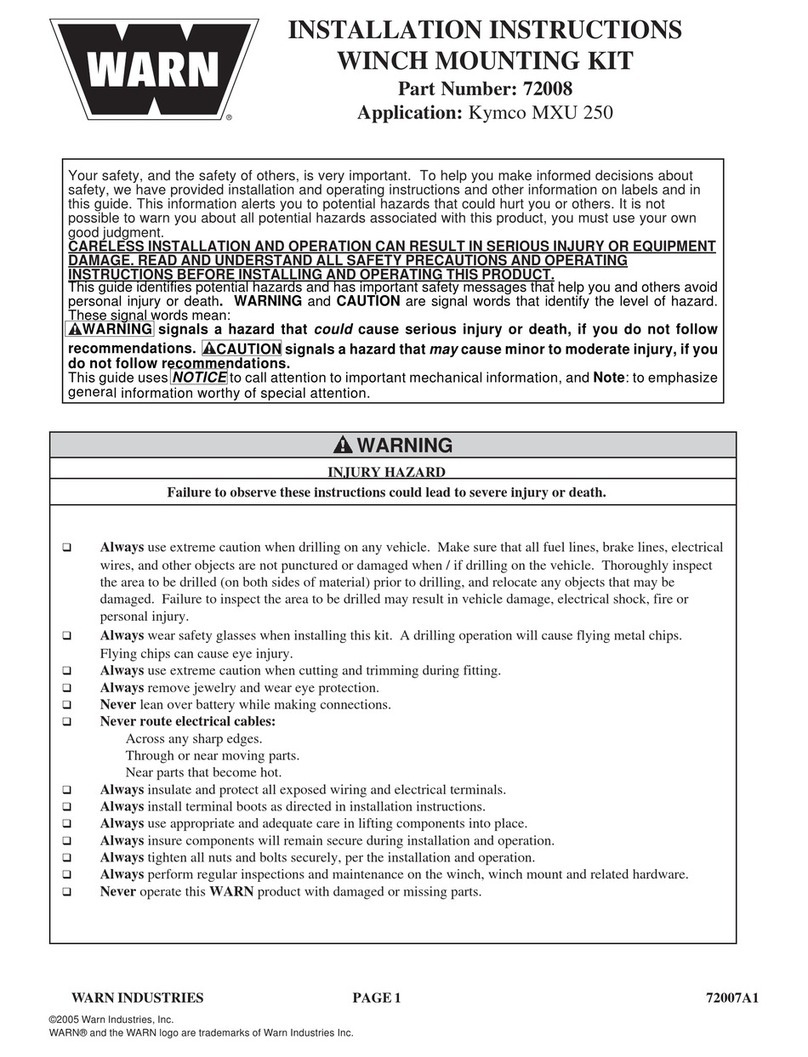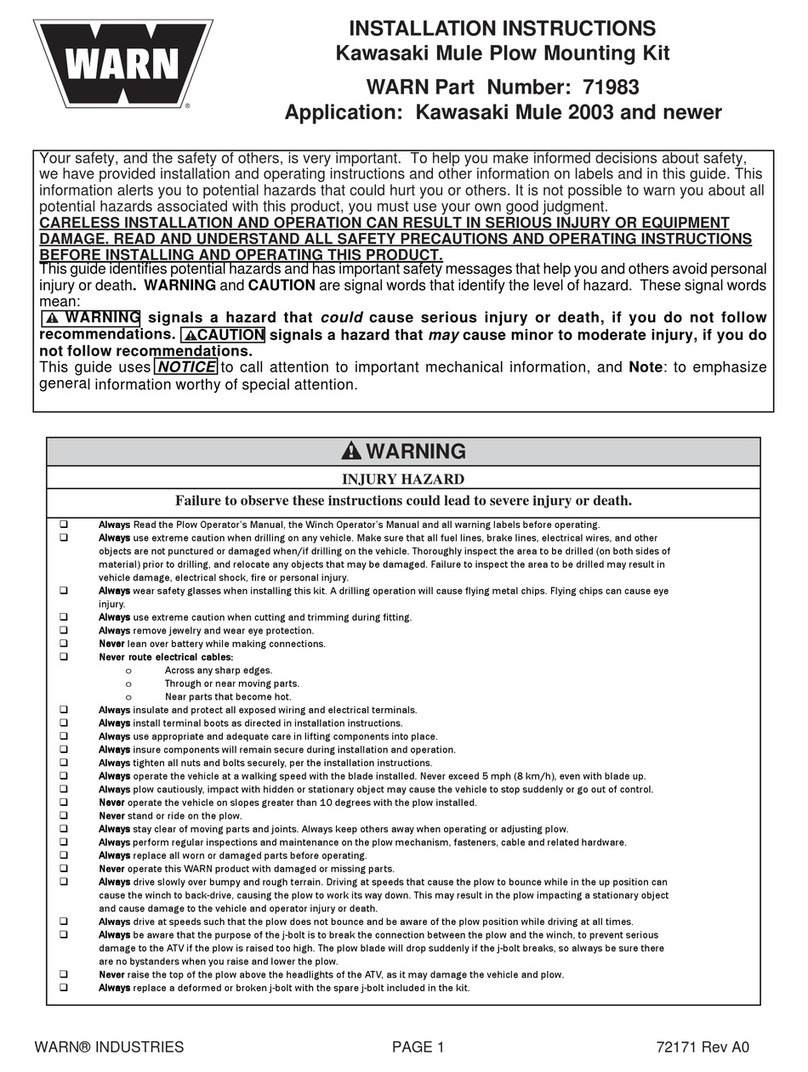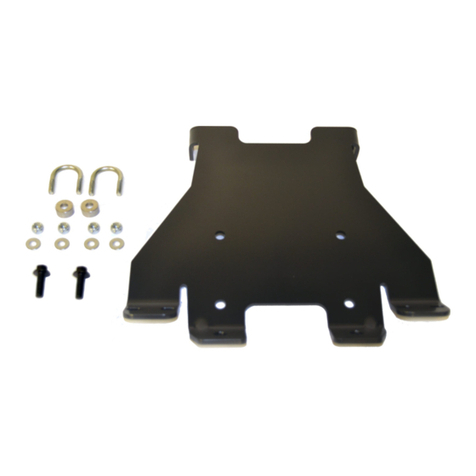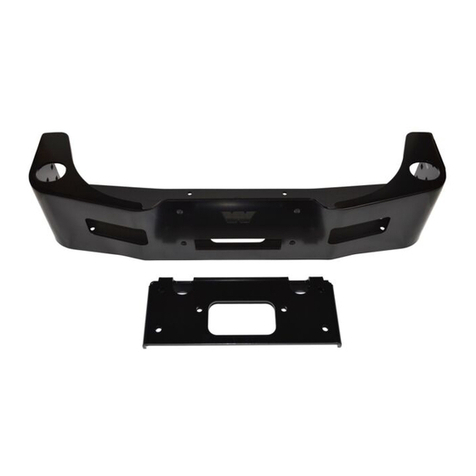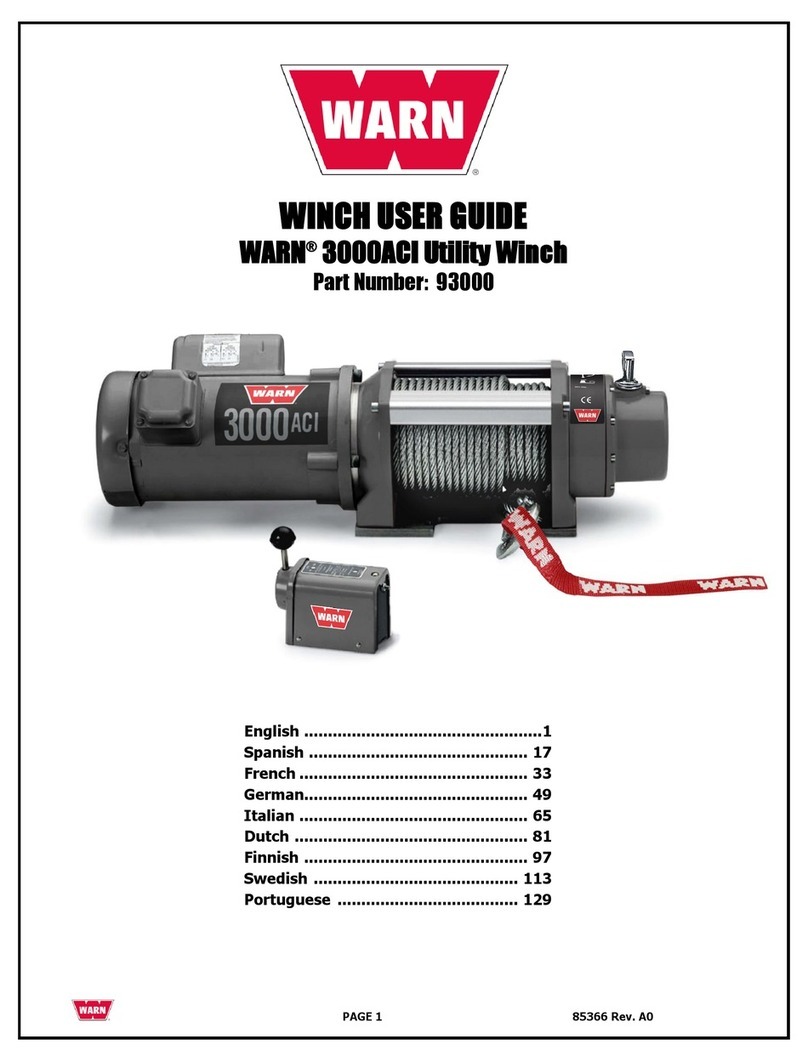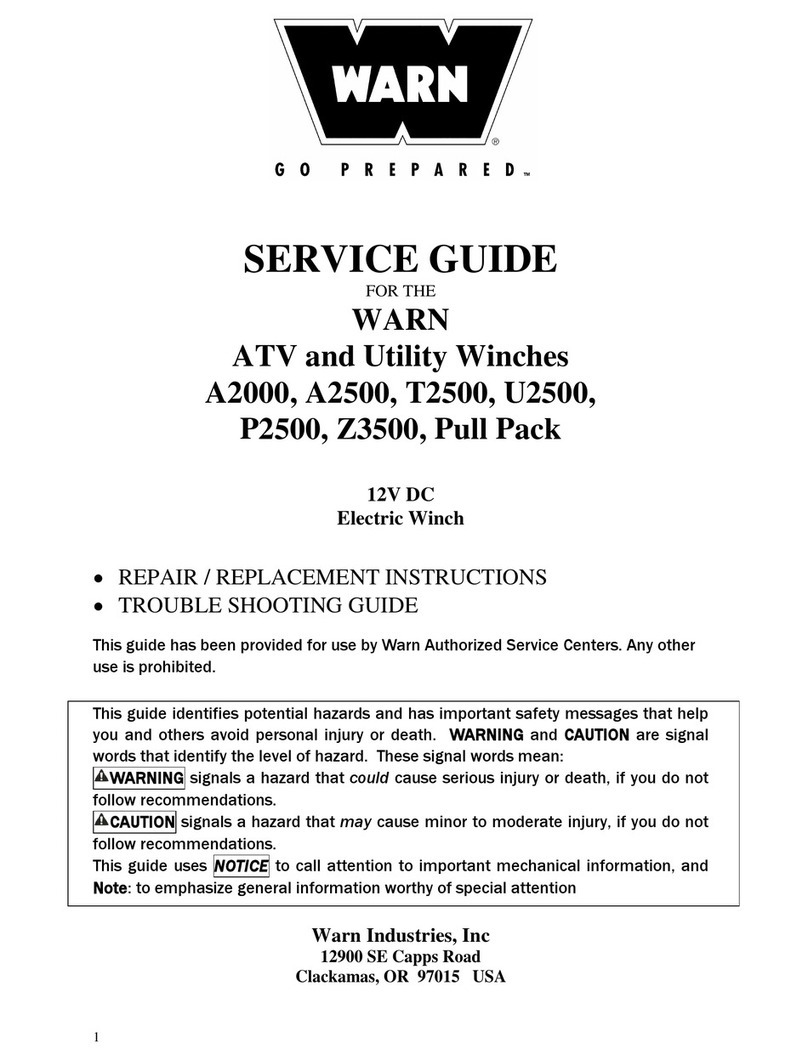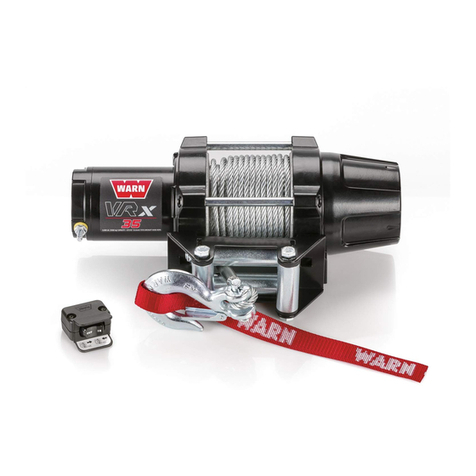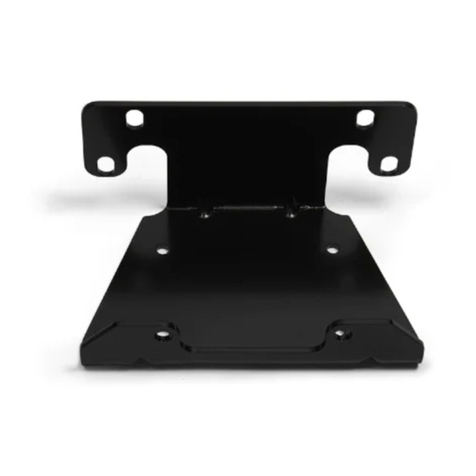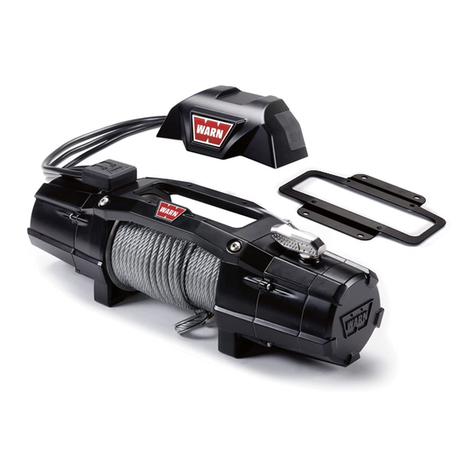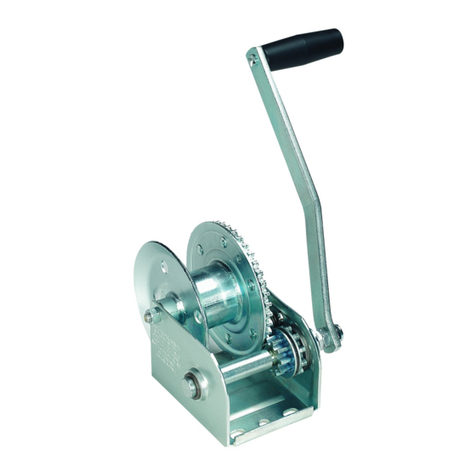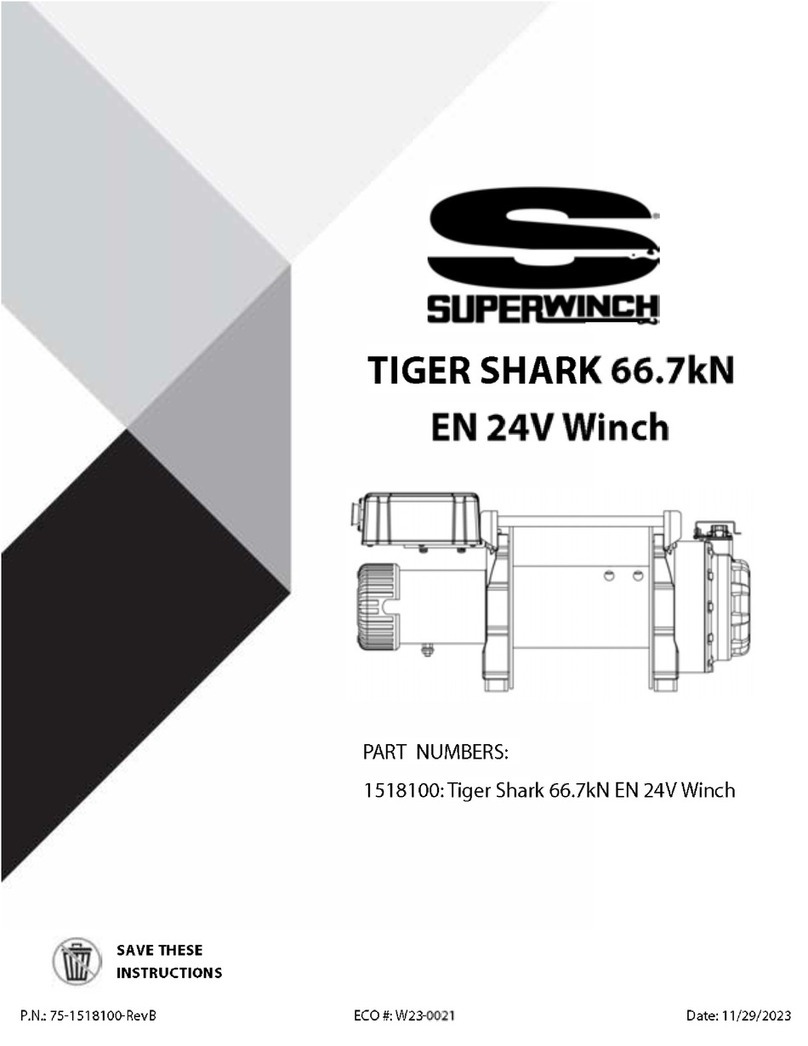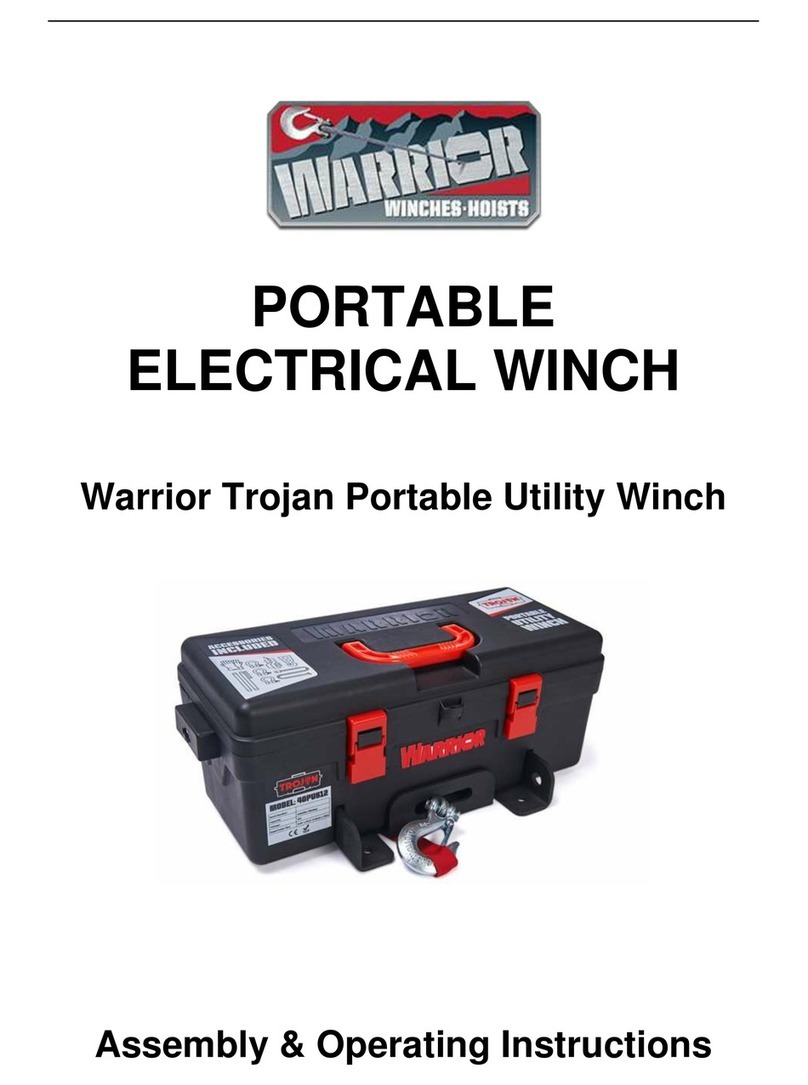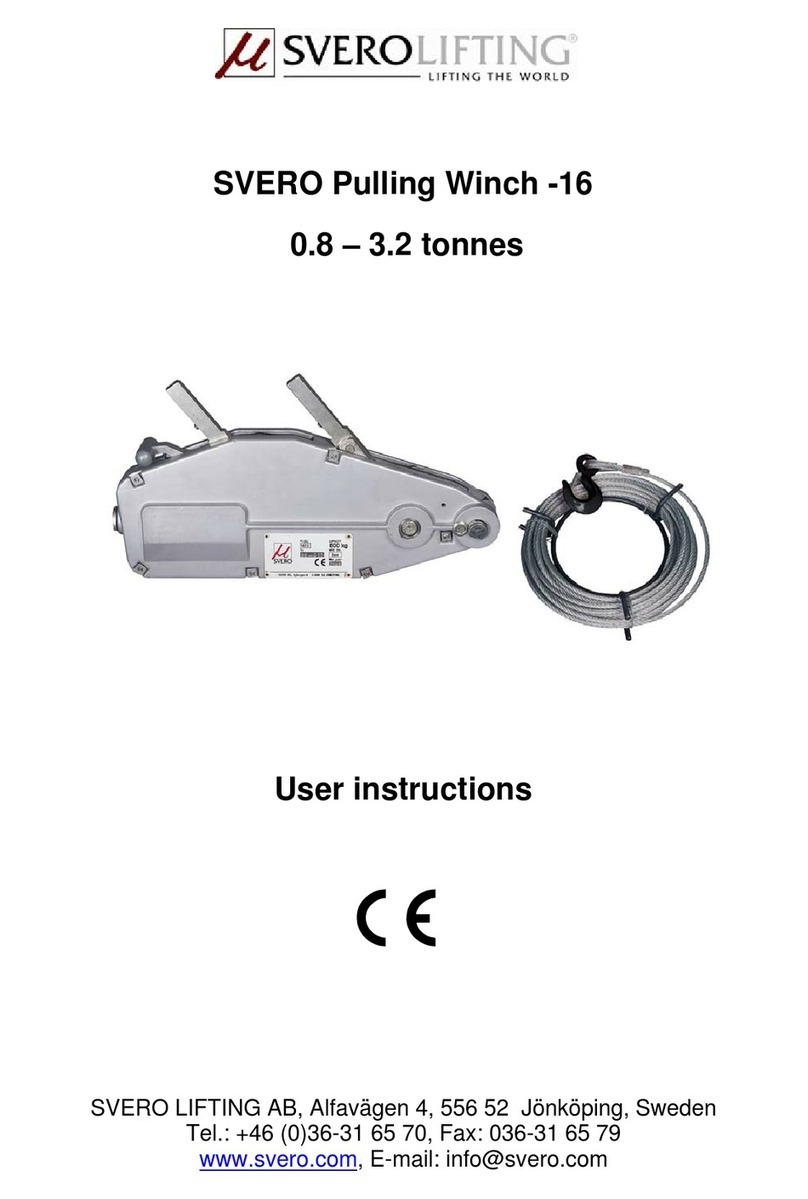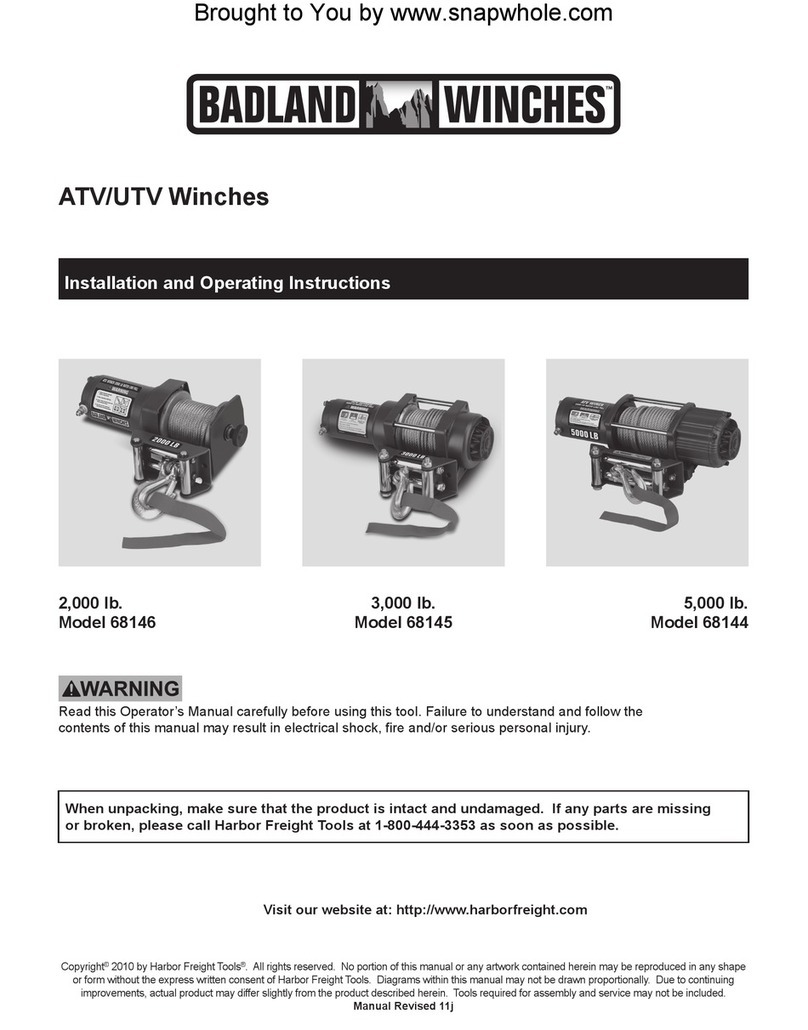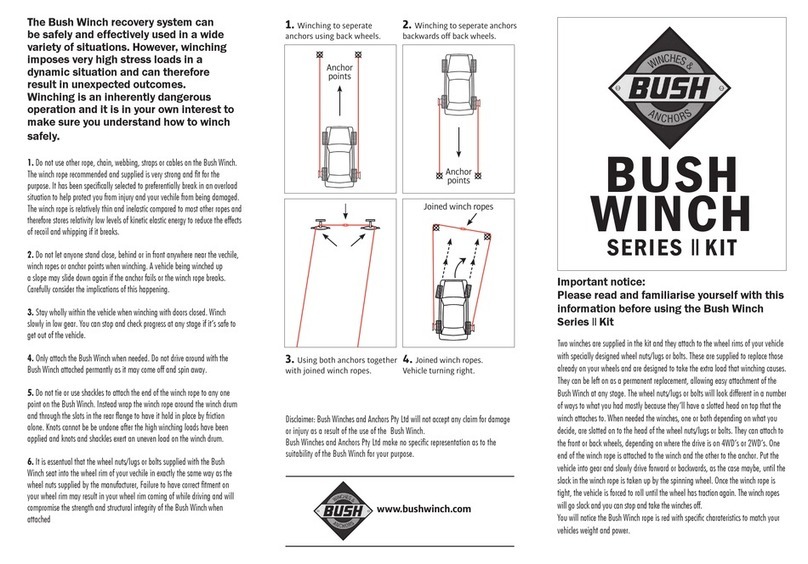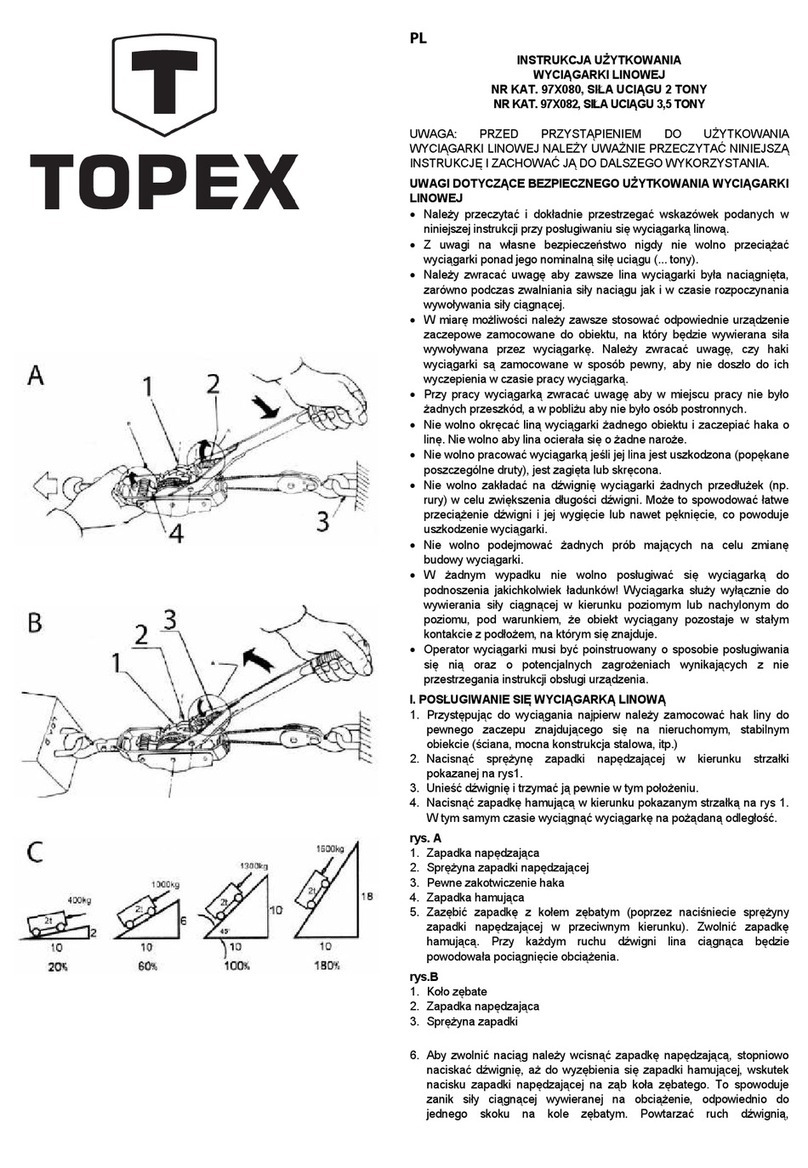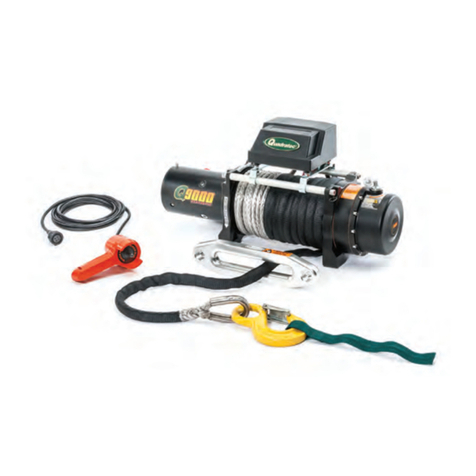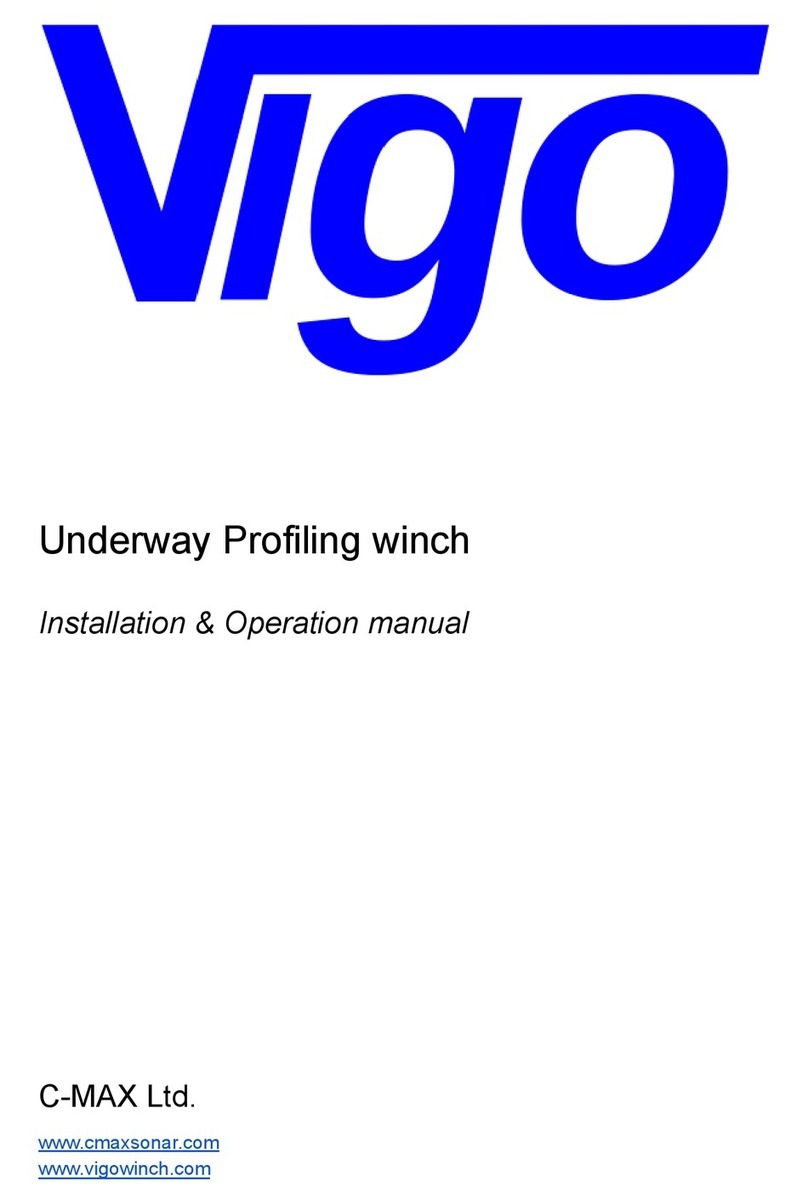GENERAL SAFETY PRECAUTIONS
As you read these instructions, you will see
WARNINGS, CAUTIONS, NOTICES and NOTES.
Each message has a specific purpose. WARNINGS
are safety messages that indicate a potentially
hazardous situation, which, if not avoided could result
in serious injury or death. CAUTIONS are safety
messages that indicate a potentially hazardous
situation which, if not avoided, could result in minor
or moderate injury. ACAUTION may also be used
to alert against unsafe practice. CAUTIONS and
WARNINGS identify the hazard, indicate how to avoid
the hazard, and advise of the probable consequence
of not avoiding the hazard. NOTICES are messages
to avoid property damage. NOTES are additional
information to help you complete a procedure.
PLEASE WORK SAFELY!
Warnings and Cautions
MOVING PARTS ENTANGLEMENT
HAZARD
Failure to observe these instructions could
lead to serious injury or death.
• Always ensure hook latch is closed and not
supporting load.
• Never apply load to hook tip or latch. Apply load
only to the center of hook.
• Never use a hook whose throat opening has
increased, or whose tip is bent or twisted.
• Always use a hook with a latch.
• Always ensure the operator and bystanders are
aware of the stability of the vehicle and/or load.
• Always keep wired remote control lead and
power cord clear of the drum, rope, and rigging.
Inspect for cracks, pinches, frayed wires or loose
connections. Damaged components must be
replaced before operation.
• Always pass remote lead thru window when used
in vehicle.
• Never hook back on rope.
MOVING PARTS ENTANGLEMENT
HAZARD
Failure to observe these instructions could
lead to serious injury or death.
General Safety:
• Always Know Your Winch. Take time to fully read
the Instructions and/or Operations Guide, and/or
Basic Guide to Winching Techniques, in order to
understand your winch and its operations.
• Never exceed winch or winch rope rated capacity.
Double line using a snatch block to reduce winch
load.
• Always wear heavy leather gloves when handling
winch rope.
• Never use winch or winch rope for towing. Shock
loads can damage, overload and break rope.
• Never use a winch to secure a load.
• Never operate this winch when under the influence
of drugs, alcohol or medication.
• Never operate this winch if you are under 16 years
of age.
Installation Safety:
• Always choose a mounting location that is
sufficiently strong to withstand the maximum pulling
capacity of your winch.
• Always use class 8.8 metric (grade 5) or better
hardware.
• Never weld mounting bolts.
• Always use factory approved mounting hardware,
components, and accessories.
• Never use bolts that are too long.
• Always complete the winch installation and hook
attachment before installing the wiring.
• Always keep hands clear of winch rope, hook
loop, hook and fairlead opening during installation,
operation, and when spooling in or out.
• Always position fairlead with warning readily visible
on top.
• Always prestretch rope and respool under load
before use. Tightly wound rope reduces chances of
“binding”, which can damage the rope.
WARNING
WARNING
GENERAL SAFETY PRECAUTIONS
MOVING PARTS ENTANGLEMENT
HAZARD
Failure to observe these instructions could
lead to serious injury or death.
Winching Safety:
• Always inspect winch rope, hook, and slings
before operating winch. Frayed, kinked
or damaged winch rope must be replaced
immediately. Damaged components must be
replaced before operation. Protect parts from
damage.
• Always remove any element or obstacle that may
interfere with safe operation of the winch.
• Always be certain the anchor you select will
withstand the load and the strap or chain will not
slip.
• Always use supplied hook strap whenever
spooling winch rope in or out, during installation
and during operation.
• Always require operators and bystanders to be
aware of vehicle and or load.
• Always be aware of stability of vehicle and load
during winching, keep others away. Alert all
bystanders of an unstable condition.
• Always unspool as much winch rope as possible
when rigging. Double line or pick distant anchor
point.
• Always take time to use appropriate rigging
techniques for a winch pull.
• Never touch winch rope or hook while someone
else is at the control switch or during winching
operation.
• Never engage or disengage clutch if winch is
under load, winch rope is in tension or drum is
moving.
• Never touch winch rope or hook while under
tension or under load.
• Always stand clear of winch rope and load and
keep others away while winching.
• Never use vehicle to pull load on winch rope.
Combined load or shock load can damage,
overload and break rope.
• Never wrap winch rope back onto itself. Use a
choker chain or tree trunk protector on the anchor.
FALLING OR CRUSHING HAZARD
Failure to observe these instructions could
lead to serious injury or death.
• Always stand clear, keep hands clear, keep others
away.
• Never operate winch with less than 5 wraps of rope
around the drum. Rope could come loose from the
drum, as the rope attachment to the drum is not
designed to hold a load.
• Never use winch as a hoist or to suspend a load.
• Always be certain anchor will withstand load, use
appropriate rigging and take time to rig correctly.
• Never use winch to lift or move persons.
• Never use excessive effort to freespool winch rope.
• Always use proper posture/lifting technique or
get lifting assistance while handling and installing
product.
• Always spool the rope onto the drum in the
direction specified by the winch warning label on
the winch and/or documentation. This is required
for the automatic brake (if so equipped) to function
properly.
• Always spool the winch rope onto the drum as
indicated by the drum rotation label.
CUT AND BURN HAZARD
Failure to observe these instructions could
lead to serious injury or death.
To avoid injury to hands and fingers:
• Always wear heavy leather gloves when handling
winch rope.
• Always be aware of possible hot surfaces at winch
motor, drum or rope during or after winch use.
WARNING WARNING
WARNING
